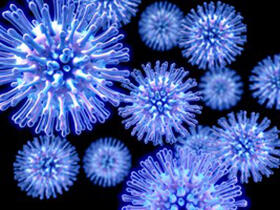
The Immunology Forum met today (Thursday, 24th October) at LSTM with a talk entitled: “Immunological memory in humans following 2009 pandemic H1N1 infection- implications for new vaccination strategy” delivered by Dr Qibo Zhang, of the Institute of Infection and Global Health, University of Liverpool.
Dr Zhang was introduced by Dr Britta Urban, Wellcome Trust Senior Research Fellow in Biomedical Research, and began his talk by looking at the 1918 H1N1 “Spanish” Flu pandemic, which killed 50 million people worldwide. He posed a question about the differences in immune responses of children and adults given that in some remote places during the 1918 pandemic many children survived the infection, while their parents did not.
He described 2009’s H1N1 pandemic virus as a “distant cousin” to the 1918 virus, explaining that previous exposure to pH1N1 in older individuals may have afforded them with some protection even so this age group is still classed as at risk for season flu.
Dr Zhang used an ex vivo model for mucosal immunity, isolating memory B cells for analysis from the tonsils and adenoids.
His research shows that those exposed to pH1N1 following the 2009 pandemic had a higher level of immunity to it, and other flu viruses of its group, including Avian Flu, than those who had not been exposed. pH1N1 is probably more immunogenic and induced cross-reactive memory B cell responses in mucosal tissue which were able to elicit neutralising antibody titres against related viruses.
The fact that the previous infection provides a higher level of protection and a cross reactive immunity to a range of different sub-types of the flu virus clearly has implications for any potential future vaccination programmes. He pondered as to whether this would have implications for a “universal vaccine”. Dr Zhang and his team are now in testing B cell responses induced by novel flu vaccine regimens.